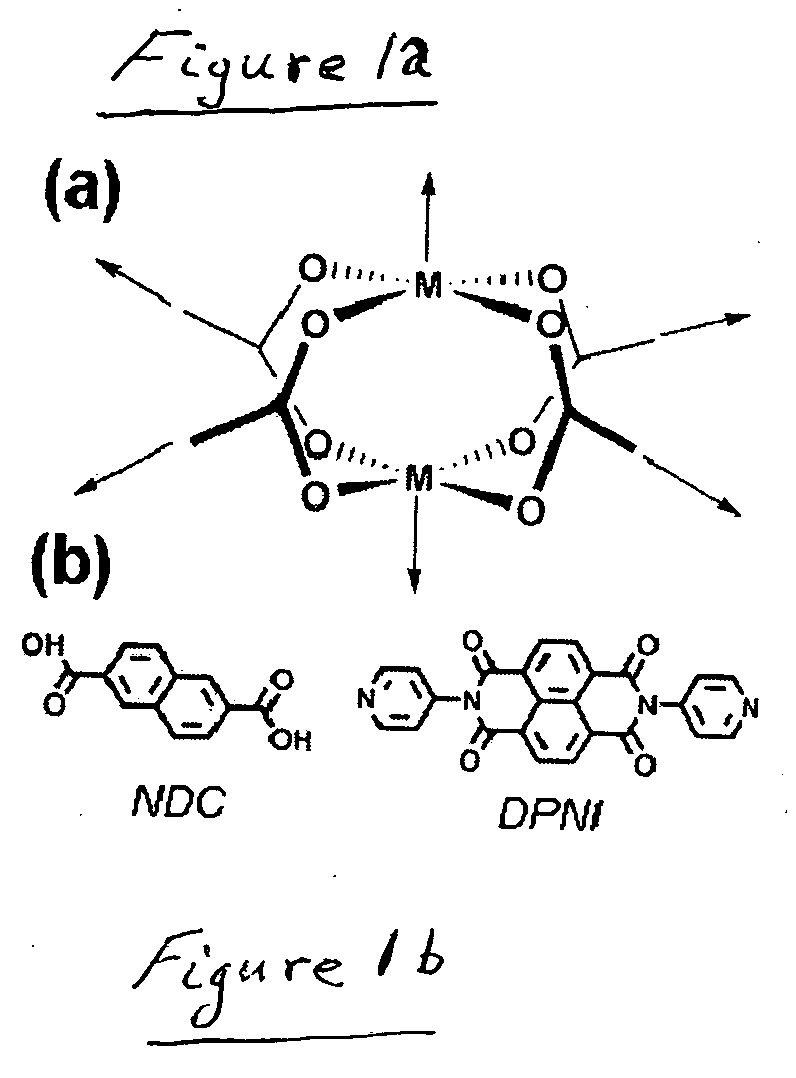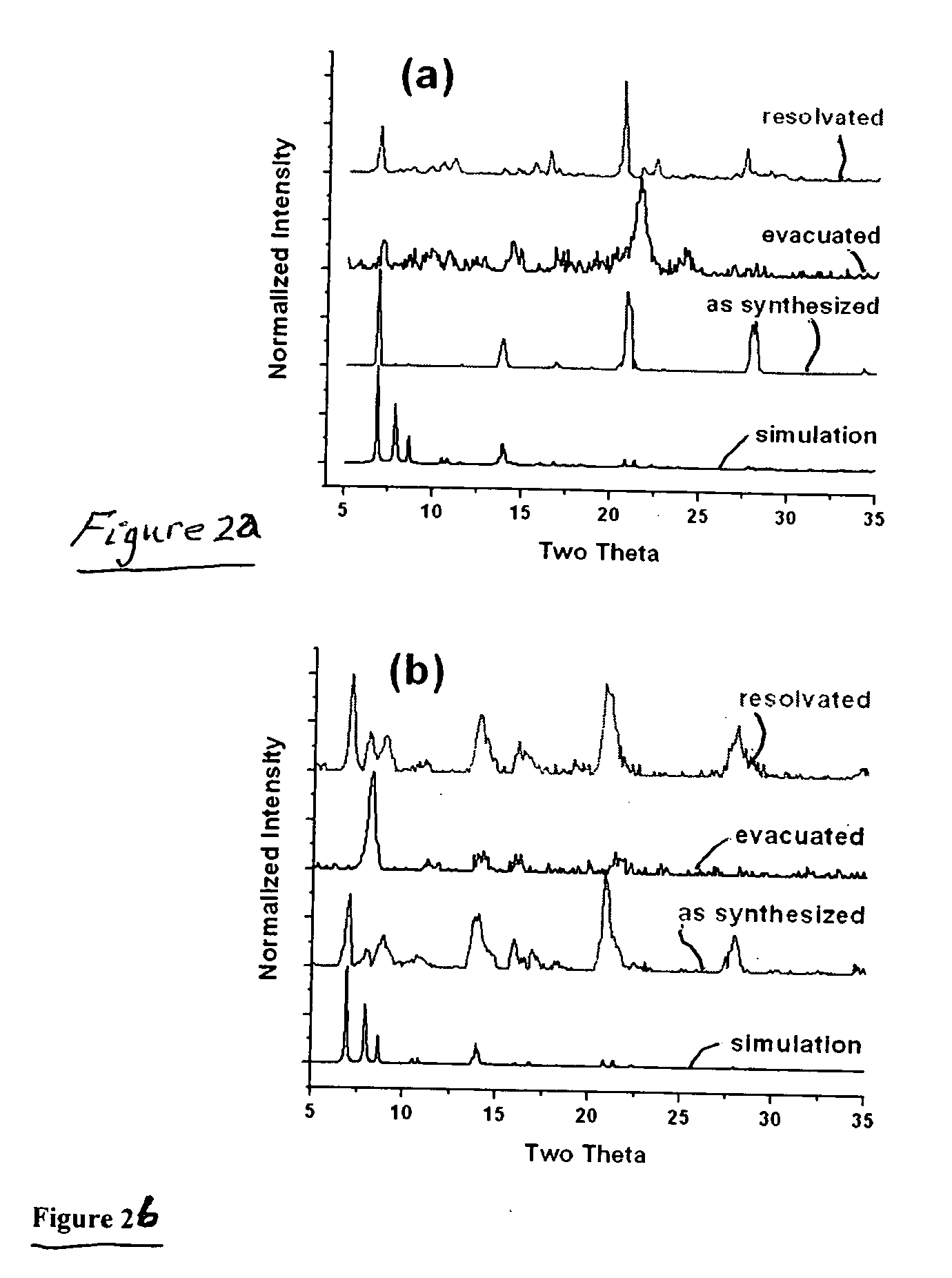Gas adsorption and gas mixture separatoins using mixed-ligand MOF material
a technology of gas mixture and separatoin, which is applied in the direction of hydrogen sulfides, separation processes, colloidal chemistry, etc., can solve the problems of pipeline corrosion and reduce the energy content of natural gas
- Summary
- Abstract
- Description
- Claims
- Application Information
AI Technical Summary
Benefits of technology
Problems solved by technology
Method used
Image
Examples
examples
[0024]For purposes of illustration and not limitation, a particular illustrative MOF material described above can be made by Zn(II) (i.e. Zn+2 cation) coordination to dicarboxylate ligands and dipyridyl ligands. As described below, the MOF can be synthesized by two routes: first route is at 80° C. for two days with conventional heating and second route is at 120° C. for 1 hour using microwave heating.
[0025]Although the two as-synthesized samples exhibit very similar powder x-ray diffraction patterns, evacuated samples show differences in nitrogen uptake. From the single-component CO2 and CH4 isotherms, mixture adsorption was predicted using the ideal adsorbed solution theory (IAST). The microwave sample shows a selectivity of approximately 30 for CO2 over CH4, which is among the highest selectivities reported for this separation.
Experimental and Simulation Methods:
Materials Synthesis and Characterization
[0026]The mixed-ligand MOF (Zn2(NDC)2(DPNI)), designated compound 1, (NDC=2,6-na...
PUM
| Property | Measurement | Unit |
|---|---|---|
| 2θ | aaaaa | aaaaa |
| 2θ | aaaaa | aaaaa |
| weight | aaaaa | aaaaa |
Abstract
Description
Claims
Application Information
 Login to View More
Login to View More - R&D
- Intellectual Property
- Life Sciences
- Materials
- Tech Scout
- Unparalleled Data Quality
- Higher Quality Content
- 60% Fewer Hallucinations
Browse by: Latest US Patents, China's latest patents, Technical Efficacy Thesaurus, Application Domain, Technology Topic, Popular Technical Reports.
© 2025 PatSnap. All rights reserved.Legal|Privacy policy|Modern Slavery Act Transparency Statement|Sitemap|About US| Contact US: help@patsnap.com



